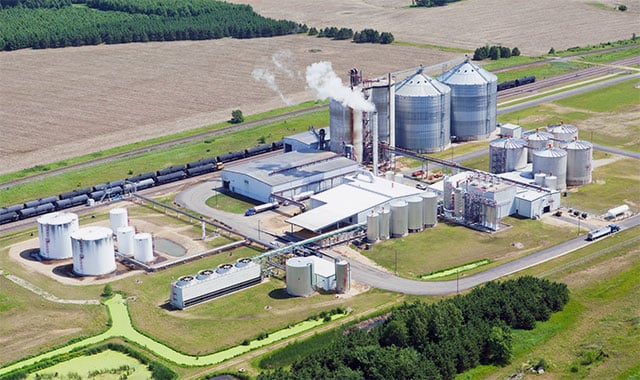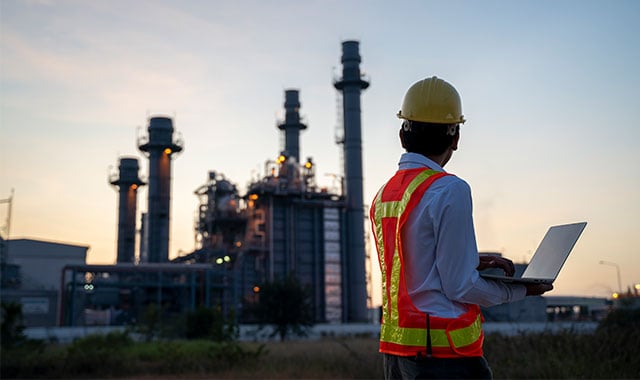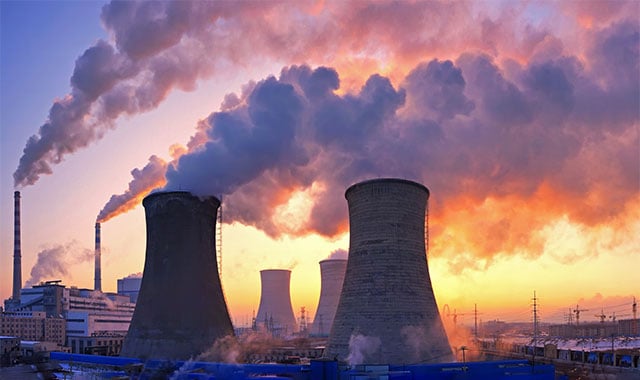6 Pathways to Decarbonization for the Power Sector
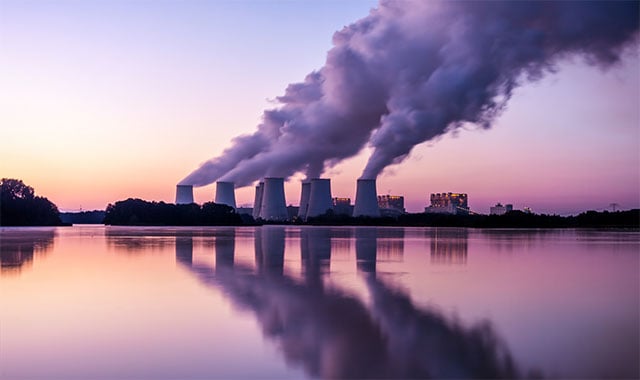
The Environmental Protection Agency (EPA) has proposed new rules that would require fossil fuel-fired power plants to slash carbon emissions by up to 90% by 2030 or 2035. How will the energy industry get there? There are several possible pathways, each with their own benefits, timelines and roadblocks. Carbon capture and sequestration (CCS) is expected to play an important role in decarbonization for the power industry.
The Path to Sustainable Power Production
A natural gas-fired power plant emits roughly one pound of carbon into the atmosphere for every kilowatt hour (kWh) of electricity produced. A coal-fired plant emits more than double, averaging 2.26 pounds of CO2 per kWh. While fossil fuel-fired power plants accounted for roughly 60% of electricity production in the U.S. in 2022, they are responsible for 99% of direct carbon emissions for the power sector. (Counting only emissions related to electricity generation.)
Power companies have a few options when it comes to reducing greenhouse gas (GHG) emissions.
- They can transition to no/low-emission energy sources, including renewable energy (wind, solar or hydro) or nuclear power plants. These energy sources emit no carbon during electricity generation (though there are GHG emissions to consider in construction, operation and maintenance).
- They can reduce the volume of emissions produced during electricity generation by implementing efficiency improvements for existing plants or switching to lower-emission fuels, such as hydrogen.
- They can offset carbon emissions by investing in carbon reductions elsewhere or purchasing renewable energy certificates (RECs).
- They can capture carbon as it is emitted and store it safely in underground geologic formations (carbon capture and storage).
6 Decarbonization Pathways
Each of these pathways to decarbonization of the power sector has potential benefits and drawbacks.
View and download the 6 Pathways to Decarbonization for the Power Sector infographic.
Pathway #1: Efficiency Improvements
Efficiency improvements (such as grid optimization, process improvements, or heat capture and reuse) are usually a cost-effective method to reduce emissions, as they often lead to cost savings in the long term. They also have the potential to improve operational performance, enhancing reliability and reducing maintenance needs. However, there are technical limits to efficiency improvements. After reaching a certain level, additional efficiency gains may be marginal or too costly. Furthermore, efficiency improvements do not eliminate carbon emissions entirely, but only reduce them.
What Are Efficiency Improvments?:
Incremental changes to improve operational efficiency (grid optimization, heat capture & reuse, etc.)
Benefits:
- Continued use of existing power plants
- Reduced operating costs
- Improved efficiency/stability
Roadblocks:
- Diminishing returns over time
Timeline:
Short.
How Far Does It Get Us?:
Only a short distance.
Pathway #2: Renewable Energy
Renewable energy is a sustainable, inexhaustible resource that emits no GHGs during electricity production. The cost of renewables, particularly solar and wind, has fallen dramatically and is expected to continue to decrease. On the downside, the intermittent nature of some renewable energy sources, such as wind and solar, can pose grid reliability challenges. Moreover, large-scale renewable energy implementation often requires significant land (or marine) resources and can face local opposition due to visual and noise impacts. New renewable energy projects also can take a long time to develop and implement, which means decarbonization benefits may not be seen for a decade or longer.
What Is Renewable Energy?:
Transitioning to renewable energy sources such as solar, wind, hydro, or geothermal.
Benefits:
- Unlimited renewable source of energy
- Zero greenhouse gas (GHG) emissions for generation
Roadblocks:
- Intermittent generation
- Grid stability/energy storage
- Substantial capital investment
- Land/permitting issues
Timeline:
Long to very long.
How Far Does It Get Us?:
Most or all of the way.
Pathway #3: Fuel Switching
Shifting from more carbon-intensive to less carbon-intensive fuels (e.g., coal to natural gas or natural gas to hydrogen) can significantly reduce CO2 emissions. While natural gas is less carbon-intensive than coal, it still emits significant amounts of CO2. Furthermore, methane, a potent GHG, can leak during natural gas extraction and transport. Hydrogen fuel has greater potential to cut GHG emissions, as the only direct byproduct of combustion is water vapor. However, switching to hydrogen fuel does require significant infrastructure upgrades. Additionally, production of hydrogen fuel is itself energy intensive and currently depends heavily on fossil fuels. Switching to hydrogen fuel only produces significant benefits if the hydrogen is produced sustainably.
What Is Fuel Switching?:
Switching fuels (e.g., coal to natural gas or natural gas to hydrogen) to reduce emissions.
Benefits:
- Continued use of existing power plant
- Hydrogen meets proposed new EPA emission reduction requirements
Roadblocks:
- Limited availability of green hydrogen
- Substantial infrastructure upgrades
Timeline:
Medium to long.
How Far Does It Get Us?:
- Coal to gas: only a short distance
- Hydrogen fuel: Most of the way (but only if sustainably produced)
Pathway #4: Nuclear
Nuclear power is a low-carbon, high-energy-density resource that can provide stable baseload power, contributing to grid reliability. Concerns about nuclear power include its high capital costs, long build times, nuclear waste disposal, and the potential for catastrophic accidents. Additionally, there are proliferation concerns regarding the misuse of nuclear technology and materials. These concerns often lead to significant local opposition to new nuclear projects.
What Is Nuclear Power?:
Building new nuclear power plants.
Benefits:
- Large, stable source of baseload power
- Zero GHG emissions for generation
Roadblocks:
- Substantial capital investment
- Public perception/ permitting issues
- Waste Disposal
- Safety
Timeline:
Long to very long.
How Far Does It Get Us?:
Most of the way.
Pathway #5: Carbon Offsets/Trading/REC
Carbon offset programs provide a financial incentive for reducing GHG emissions and can help power plants meet their emission reduction goals more cost-effectively. But offset projects do not lead to real and permanent emission reductions for the power plants themselves, and they can delay the transition to low-carbon technologies. There is also a risk of 'double counting' emission reductions, where both the buyer and seller of the offset claim the reduction. These concerns have raised questions about the true benefit of offset and REC programs.
What Is Carbon Offsets/Trading/REC?:
Purchase renewable energy certificates (RECs) or invest in carbon reduction elsewhere.
Benefits:
Continued use of existing power plants.
Roadblocks:
- Power plant emissions not actually reduced
- Market/regulatory environment
- Greenwashing” perception
Timeline:
Short.
How Far Does It Get Us?:
Only a short distance (if any at all).
Pathway #6: Carbon Capture and Storage (CCS)
CCS has the potential to substantially reduce emissions from existing fossil fuel power plants. By capturing the majority of carbon emissions at the source, CCS prevents carbon from entering the atmosphere. While it does require a substantial initial investment, incentive programs such as the 45Q tax credit have made CCS projects highly cost-competitive with alternatives such as new renewable projects or nuclear power plants.
What Is Carbon Capture and Storage?:
Directly capture carbon emissions and store them safely underground. Get more details about CCS on our Carbon Capture and Storage FAQs page.
Benefits:
- Continued use of existing power plants
- Meets proposed new EPA emission reduction requirements
Roadblocks:
- Infrastructure upgrades
- Finding suitable geologic storage
- Some energy penalty during capture
Timeline:
Short to medium.
How Far Does It Get Us?:
Most or all of the way.
CCS: A Bridge to a Carbon-Neutral Future
To reach a carbon-neutral future, the power sector will likely need to explore many of these pathways in tandem. For power companies that still rely primarily on fossil fuel-fired power generation, CCS provides a critical bridge technology, allowing them to continue to use these resources while cutting carbon emissions from power generation by 90% or more.
That’s why CCS is explicitly described in the new EPA rules as one of three possible pathways for existing coal- or gas-fired power plants. (The other two pathways are fuel switching or, for coal-fired plants, ceasing operations by 2040.)
Of the possible pathways to decarbonization, only CCS currently has the potential to meet proposed emission reduction requirements for fossil fuel-fired power plants within the timelines required. It can be implemented on existing power plants now without significant disruptions in operations. That allows power plants to see carbon reduction benefits quickly, while still relying on existing assets for baseload power.
That is a critical consideration for the power industry in the U.S. While switching to renewables may be the answer in the long term, there are currently long timelines for new renewable projects, often a decade or longer. The industry also needs to solve technical challenges around power storage before switching more of the grid to intermittent energy sources such as wind and solar. In the meantime, fossil fuel plants are still the most important source of reliable baseload power in the country—and will remain so for at least a decade or longer.
The energy sector cannot afford to wait for new renewable projects to be built or green hydrogen to be produced cheaply and at scale before tackling its carbon emission problem. The proposed new EPA rules require fossil fuel plants to reduce emissions by as much as 90% by 2030 or 2035—dates that are right around the corner. To meet these quickly approaching deadlines, CCS must be part of the decarbonization portfolio.
Learn how CCS is helping power companies reach their clean energy future. Download the white paper "Decarbonizing the Power Sector" here.
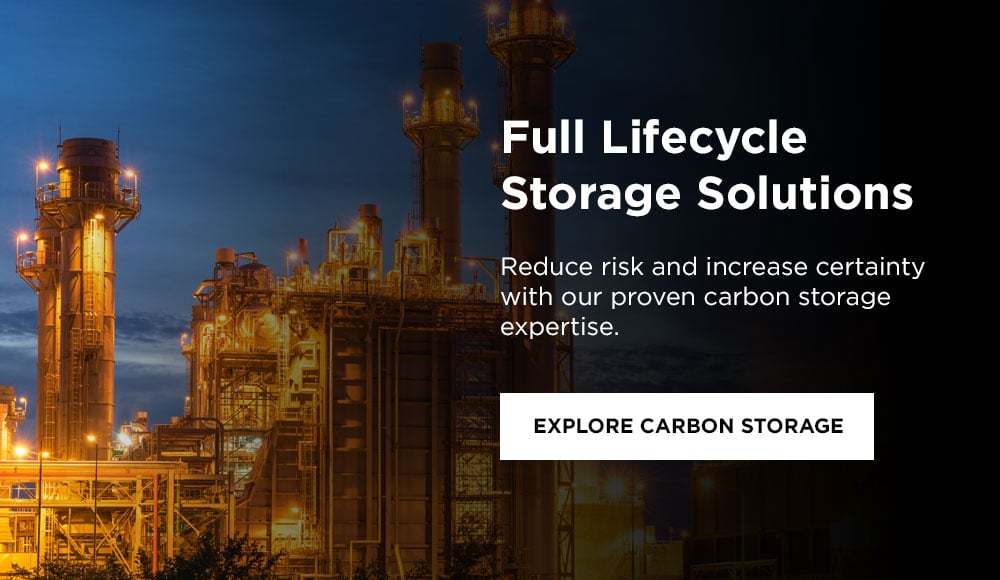
Related Blogs
BATTELLE UPDATES
Receive updates from Battelle for an all-access pass to the incredible work of Battelle researchers.


